Full name Surya Shekhar Ganguly Role Chess Grandmaster Country India | Title Grandmaster Name Surya Ganguly | |
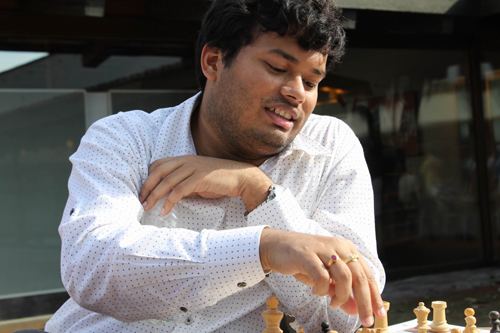 | ||
Sicilian defense b90 surya shekhar ganguly vs emanuel berg gibtelecom 2009 chessworld net
Surya Shekhar Ganguly (Bengali: সূর্য শেখর গাঙ্গুলী; born 24 February 1983 in Kolkata) is an Indian chess grandmaster, 2009 Asian champion and six-time Indian champion.
Contents
- Sicilian defense b90 surya shekhar ganguly vs emanuel berg gibtelecom 2009 chessworld net
- Edmonton international chess festival 2016 chess lecture by gm surya shekhar ganguly india
- Personal life
- Early career
- Notable achievements
- National events
- Asian events
- Olympiads and World Team 2010
- Other international tournaments
- Team Anand
- Sample Games
- References
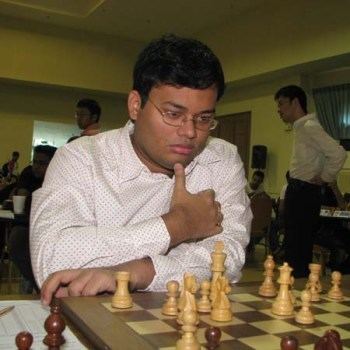
Ganguly became an International Master at 16 and a Grandmaster at 19. He worked in the team of seconds that assisted Anand in winning the World Championship matches against Vladimir Kramnik, Veselin Topalov and Gelfand in 2008, 2010 and 2012 respectively.
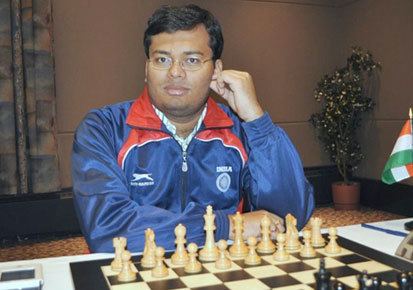
He was awarded the Arjuna Award in 2005 for his outstanding achievement in sports. He also got the "Shera Bangali" award in 2009 as the best Sportsperson of Bengal and the "Khel Samman" award in 2013 from the Government of West Bengal. He was awarded ″Bangabhusan″, the second highest civilian award of West Bengal, in 2015.
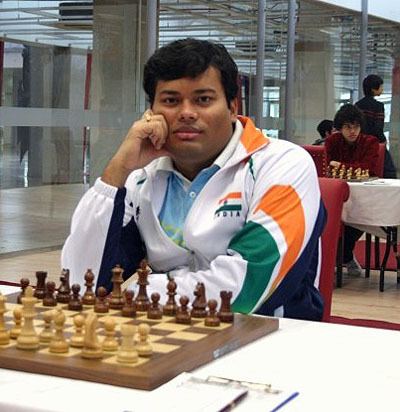
Edmonton international chess festival 2016 chess lecture by gm surya shekhar ganguly india
Personal life
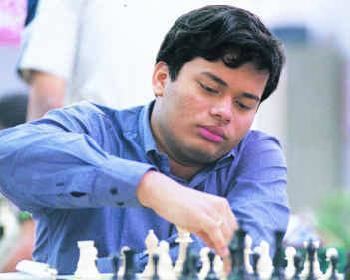
He was born to Pankaj Ganguly and Aarti Ganguly on 24 February 1983. He has an elder sister who is a doctor by profession. He is working as Deputy Manager at the Indian Oil Corporation. He got married to his childhood sweetheart Sudeshna on 7 February 2011.
Early career
Ganguly's grand father, the late Anil Basumallick, taught him chess at the age of 5. Soon he became very popular in chess circles of Kolkata as he was the youngest player in most tournaments taking place during those days and also won prizes. In 1991, at the age of 8, he won both the Indian National U-10 and U-12 Championships. He won these Championships again in 1992 and 1995.
The following are his achievements in the World Youth Chess Championship in his age categories:
In 1995, at the age of 11, he beat a Grandmaster, the youngest player ever to do so until that time.
Notable achievements
Ganguly has played in many individual and team tournaments, both national and international. He achieved his IM (International Master) title at Goodricke International, Kolkata 2000 and the GM (Grand Master) title at the 35th Chess Olympiad, Bled 2002. Some of his notable achievements are given here.
National events
In addition to the National U10 and U12 championships mentioned above, Ganguly's achievements in other national events are as under.
Asian events
Olympiads and World Team 2010
Other international tournaments
Team Anand
Ganguly has been a member of the team of seconds that helped Anand win his World title matches against Kramnik, Topalov and Gelfand in 2008, 2010 and 2012 respectively. Other members of the team were GM Peter Heine Nielsen, GM Radosław Wojtaszek and the former FIDE World Champion GM Rustam Kasimdzhanov.
Anand has praised Ganguly for being very effective as a team member. About Ganguly, he says, "He is a very good chess player and analyst who works really hard. We (have worked) together for six-seven years and will work together for a long time. Why change formula when it's working."
Sample Games
While Ganguly is a fine positional player, he also relishes complicated positions. The following game is taken from the World Team Chess Championship 2011. Here Ganguly (white) plays Peter Svidler of Russia in the final round. Shortly thereafter, Svidler went on to win the Russian Chess Championship a record sixth time and then the Chess World Cup 2011.
This game was selected the fifth best in Chess Informant 113, with a jury member giving it a score of 10/10.
1. e4 g6 Totally unexpected from Svidler but Russia was in a must win situation! 2. d4 Bg7 3. Nc3 d6 4. Be3 a6 5. Qd2 Nd7 6. O-O-O b5 7. h4 h6 8. f4! h5 9. Nf3 Bb7 10. Ng5 Nh6 11. e5 Nb6 12. Bd3 Qc8 13. Rhf1 Nd5 Black wants to have his bishop on d5 and does not wish to play e6 at all. 14. Nce4! O-O? 15. f5! Nxf5 16. Rxf5 gxf5 17. Ng3 Nxe3 18. Qxe3 f4 (Diagram)
19. Bh7+!! Apparently, Svidler missed this move and that may be the reason he allowed Ganguly to play 15.f5. Without this combination black is doing fine here. Kh8 20. Qd3 dxe5 21. dxe5 f6 22. Bg8! f5 23. Be6 Qe8 24. Bxf5! 1-0
The following game is from 11th Edmonton International Tournament 2016, a 10-player round robin event. Ganguly (White) was paired against Alexei Shirov (Black) in the last round. It was a must-win situation for both players, Ganguly to finish equal first with Shankland and Shirov to finish equal second with Ganguly.
1.e4 c5 2.Nf3 Nc6 3.d4 cxd4 4.Nxd4 Nf6 5.Nc3 e5 6.Ndb5 d6 7.Bg5 a6 8.Na3 b5 9.Nd5 Be7 10.Bxf6 Bxf6 11.c3 Bg5 12.Nc2 Rb8 13.a4 bxa4 14.Ncb4 Nxb4 15.cxb4 0-0 16.Rxa4 a5 17.h4 Bh6 18.b5 Bd7 19.Nc3 d5 20.exd5 e4 21.Be2 f5 22.d6 Kh8 23.g3 f4 24.Rxe4 Bf5 25.Re5 Qf6 26.Qd5 fxg3 27.fxg3 Qg6 28.g4 Bc8 (Diagram)
29.Ne4!! Following Gelfand’s teaching that it is not important how quickly you win but it’s more important how safely you win. (Boris Gelfand: Positional Decision Making in Chess, Quality Chess UK, 2016). The computer says 29.Qd4 is the fastest route but Ganguly trusts Gelfand. Bb7 30.h5 Qxe4 31.Qxe4 Bxe4 32.Rxe4 Rfd8 33.Rd4 Finally, all complications are over and White is two pawns up. While calculating 29.Ne4 Ganguly had to just make sure that he didn’t lose his vital 'd6' pawn that restricts Black's activity. Bc1 34.d7 This is again the safest way as it totally restricts Black. Bxb2 35.Rd5 Rb7 36.0-0 g6 37.h6 Ba3 38.Rf7 a4 39.Re5 Rbb8 40.Bc4 Bf8 41.Kg2 a3 42.Ba2 Bd6 43.Re6 Bf8 44.b6 White will play b7 when Black will be able to move nothing but his bishop. Shirov decided not to continue any further. 1-0
